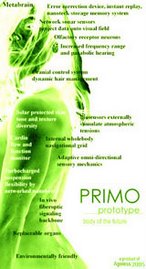As mentioned in the previous blogpost, there are various crossovers between technology and biology. This merger has given rise to ‘sciences of the artificial’, such as artificial intelligence (AI), and artificial life (Alife).
You might be familiar with the Steven Spielberg movie Artificial Intelligence: AI (2001), whereby a highly advanced robotic boy longs to become "real" so that he can regain the love of his human mother.
AI scientists predict that intelligent or ‘thinking’ machines can be created- and will be in the near future. However, humanists argue that machines are programmed to calculate solutions, and this does not qualify as thinking in the traditional sense. They argue there is no thinking in a machine, “only electrical charges exchanging input and output signals”[1]. AI scientists respond by pointing out that this is exactly how neuron activity in the brain also works; and don’t we consider this thinking?
There are two forms of AI: Classical AI, and Connectionist AI. Classical AI is concerned with the imitation of human intelligence in machines. The science claims to translate ‘the language of thought’ into computer programs. Connectionist AI on the other hand is concerned with the mere creation of intelligent machines, be it resemblance of human intelligence or not. Instead of replicating human intelligence, the science simulates the functions of human organs.
Alife replicates traditional biology by recreating biological phenomena. The science simulates biological systems relating to life through computer models, robotics, and biochemistry. Hence, there are three main kinds of Alife: soft from software, hard from hardware, and wet from biochemistry. According to Alife scientist John von Neumann, "life is a process which can be abstracted away from any particular medium"[2].
From the three abovementioned sciences of artificial life it is clear that technology has had to veer towards the physical (and not away from it) in aiming to serve the human culture.
I believe that it is this fresh understanding of artificial life that will open up people to the possibilities presented by AI and Alife, instead of fearing them.
References:
[1] Lister, M (ed). 2003. New Media: A critical Introduction. Routledge.
[2] Wikipedia-Artificial Life
Showing posts with label intelligence. Show all posts
Showing posts with label intelligence. Show all posts
Tuesday, August 28, 2007
Subscribe to:
Posts (Atom)
